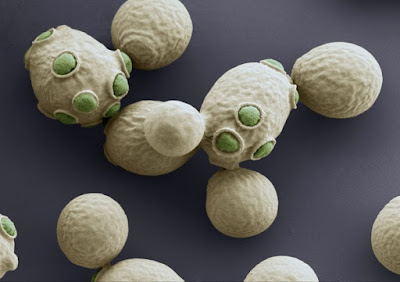WARNING: There’s A New Deadly Disease Worse Than HIV

Human Papilloma Virus, or commonly referred to as HPV, is accountable for the outbreak of a new deadly disease. It is predicted that this new epidemic, even deadlier than AIDS, will claim many lives. The following key points explain why HPV is deadlier than HIV.
1. The Condom Misconception
There’s a common misconception that condoms offer full protection against most sexually transmitted diseases, including HIV/Aids. But, according to new research, condoms cannot provide 100% protection against the Human Papilloma Virus (HPV), which can spread through skin-to-skin contact with infected areas of the skin not covered by the condom such as the male and female genitalia. This is especially serious for women because HPV is a silent killer that can be inactive, thus unnoticed for years before it attacks
2. The HPV Nightmare
The most widespread STI in the United States, Human papilloma virus (HPV) is the name for a group of viruses that affect your skin and the moist membranes lining your body, for example, in your cervix, anus, mouth and throat. There are more than 100 types of HPV, many of which cause nasty looking warts.
3. A Prolific Virus
HPV is a common and highly contagious infection, with over three quarters of sexually active women acquiring it at some time in their lives. HPV is sexually transmitted, but skin-to-skin genital contact is also a well-recognized mode of transmission. This means that condoms cannot give full protection.
4. Contracting The Virus
HPV is mainly transmitted through sexual contact and most people are infected with HPV shortly after the onset of sexual activity. But HPV can be passed even when the infected individual has no signs or symptoms of the virus. In some cases it takes years for symptoms to appear, and rarely people never experience any symptoms during their life.
5. Links To Cancer
Cervical cancer is by far the most common HPV-related disease. Nearly all cases of cervical cancer, which is the leading cause of death in women, can be attributed to HPV infection. In fact, two types of the HPV, types 16 and 18, are responsible for almost 70% of all cervical cancer cases.
7 signs of cervical cancer that women need to observe →
6. Danger To Women
Women are more susceptible to contracting the virus than men. Regarding HPV transmission rates, male-to-female transmission rates are 5% higher than female-to-male transmission rates.
Human Papilloma Virus Explained
Human Papillomavirus (HPV) is a group of viruses that are known to cause different types of infections, including warts and cancer. There are more than 150 different types of HPV, and some of them are considered high-risk because they are known to cause certain types of cancer, such as cervical, anal, oropharyngeal, and genital cancer.
One of the main reasons HPV is considered dangerous is that it can cause cancer. In most cases, the body’s immune system is able to clear the infection, but in some cases, the virus can persist and may lead to the development of abnormal cells that can turn into cancer. For example, HPV is responsible for nearly all cases of cervical cancer, and it’s also known to cause other types of cancer such as anal, oropharyngeal and genital cancer.
There are vaccines that can prevent HPV infection, and early detection and treatment is crucial in preventing progression of HPV-related diseases. Regular Pap smear tests and HPV testing can detect abnormal cells early, allowing for prompt treatment to prevent cancer.
In summary, HPV is a dangerous virus as it can cause cancer, such as cervical cancer, and other types of cancer, and it’s often asymptomatic, making it hard to detect. Vaccination, early detection and treatment are important to prevent HPV-related diseases.






